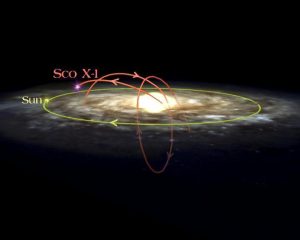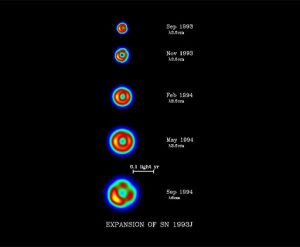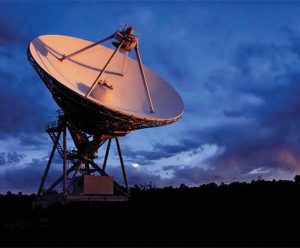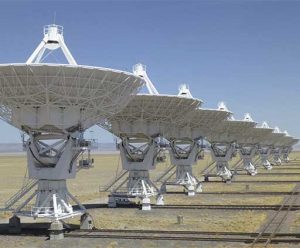The discovery of microquasars within our own Milky Way Galaxy has won two astronomers a prize from the High Energy Astrophysics Division of the American Astronomical Society.
Astronomers Make a Supernova Movie
Astronomers using an international network of radio telescopes have produced a movie showing details of the expansion of debris from an exploding star.
Black Hole in a Double Star System
As scientists from the NRAO analyze a timelapse of powerful jets of material emerging from a double-star system 10,000 light-years away, new evidence from other research confirms that the source of the jets is a black hole.
VLBA Tracks Ejected Material From Mysterious X-Ray Nova
Images made with the Very Long Baseline Array radio telescope show the mysterious X-ray nova in Scorpius as it ejected blobs of material at tremendous speeds over the period from August 18 to September 22, 1994.
Superluminal Motion Found In Milky Way
Researchers using the Very Large Array have discovered that a small, powerful object in our own cosmic neighborhood is shooting out material at nearly the speed of light — a feat previously known to be performed only by the massive cores of entire galaxies.









